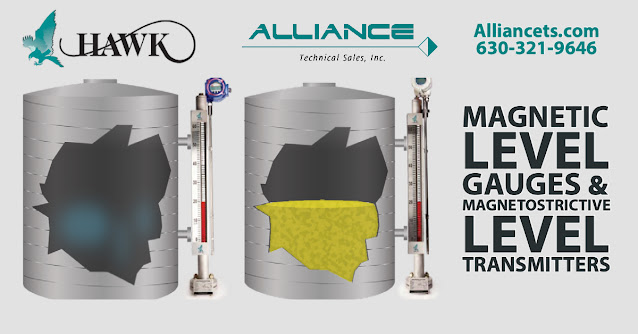Magnetic level gauges are a safe, easy, and dependable way to measure fluid levels inside a tank. These visual indicators are a non-invasive, low-maintenance, cost-effective alternative to sight glasses. Because the fluid never comes into contact with the indicating glass, they are exceptionally safe for flammable, toxic, and corrosive liquids. There is no risk of leakage if the glass ever breaks.
Magnetic Level Gauges (MLGs) are widely used in the monitoring and process control of liquid level and interface in various industries such as petroleum, chemical, power, paper, metallurgy, and water treatment. They are suitable for continuous process level measurement that is real-time, precise, safe, and dependable.
The magnetic level gauge, bolted to the process vessel, provides real-time level and interface measurement based on magnetic coupling and buoyancy principles. IA float is inside the level gauge chamber with a 360° magnetic ring. An indicator with a vacuum glass tube containing a bi-colored two-face magnetic bargraph connects to the outside of the chamber. The float moves in response to the level change, causing the magnetic bargraph to turn and change color. Additionally, a mating magnetostrictive transmitter provides a continuous analog or digital output.
The precise liquid level is displayed or "read." The indicator uses hermetically sealed glass tube technology to show the process level clearly. It eliminates, among other things, the common problems associated with glass gauges, such as vapor, condensation, and liquid leakage.
Most Common Applications for Magnetic Level Gauges:
- Boiler: Steam drum liquid level
- Power generation: Auxiliary machinery liquid level (HP reheater, LP reheater, de-aerator, condenser and heating network heater etc), chemical water
- Coal Chemical: Methanol, dimethyl ether, synthesis ammonia/urea, MTO, CTL, SNG
- Silicon industry: Organic silicon, polycrystalline silicon
- Petroleum and petrochemical: Oil and gas, ethylene, trimerization and etc.
- Fine Chemicals: Methane oxide, epoxy ethane, aniline, PTMEG, BDO, carbon fiber, POM, acetic acid, styrene, rubber, crude benzol refining
- Others: Metallurgy, paper-making, water treatment, biological, pharmaceutical, food and beverage etc.
For more information in Illinois, Indiana, and Kentucky contact Alliance Technical Sales. Call 630-321-9646 or visit https://alliancets.com.






